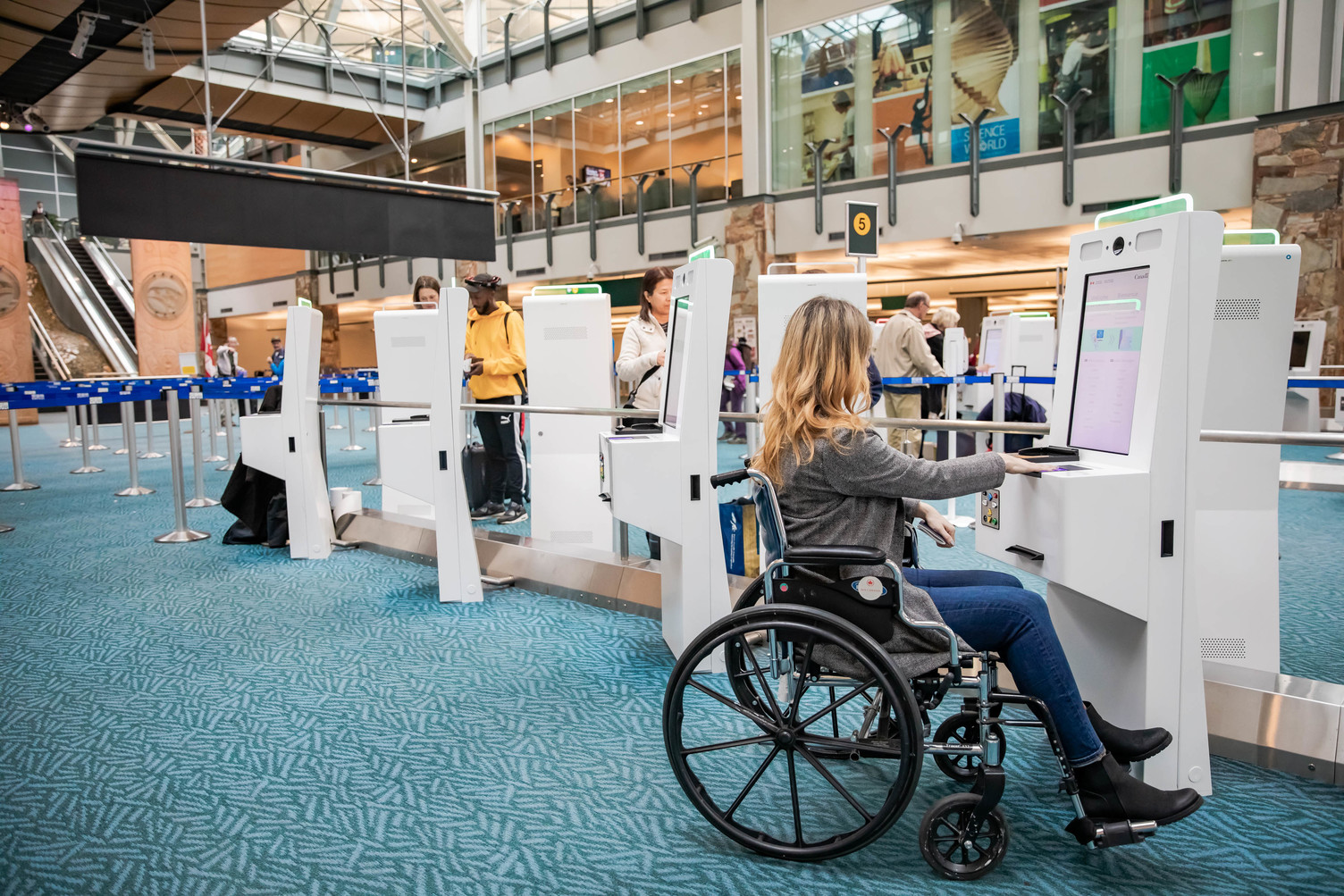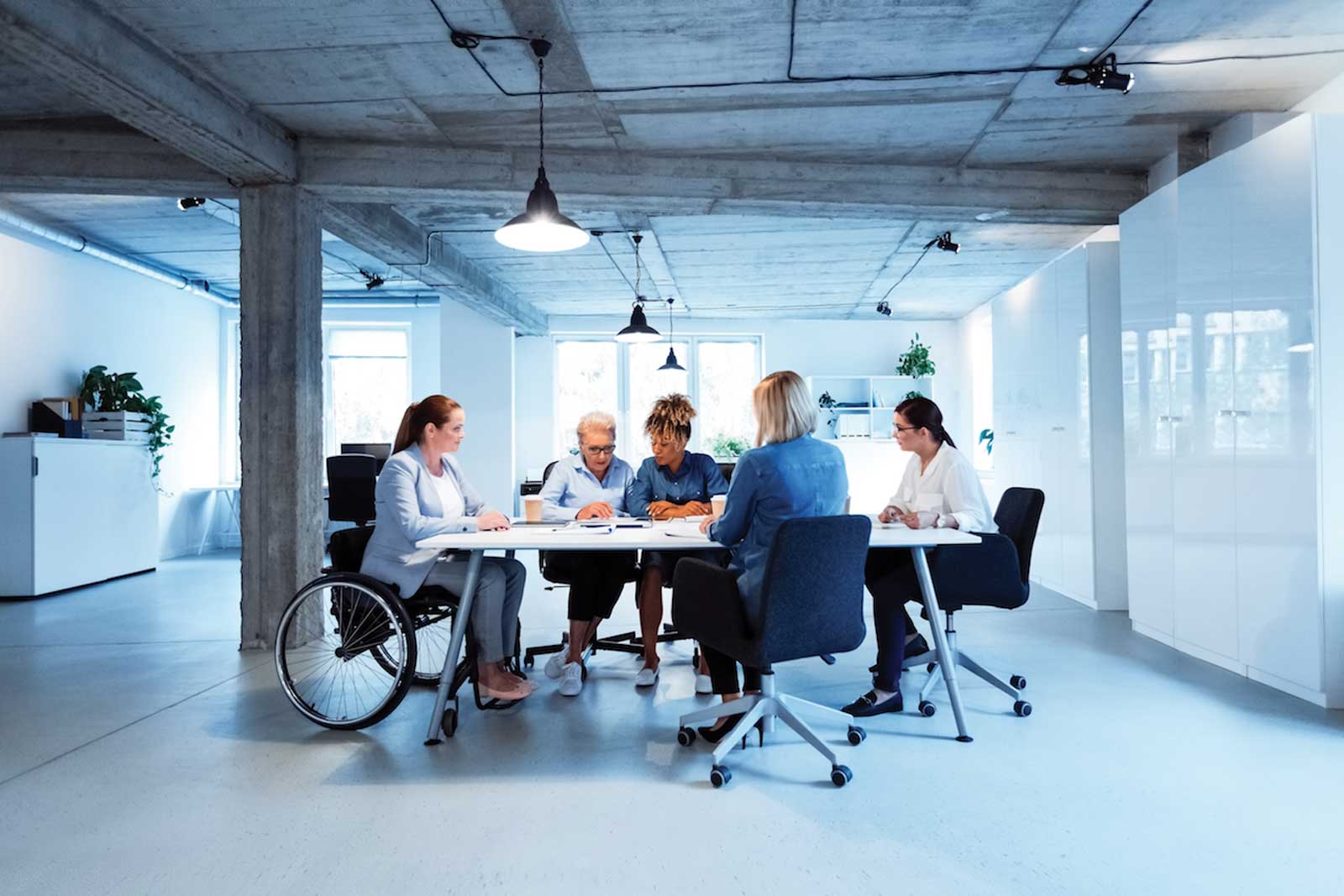By Madeline Barber
Earlier this year, HCMA Architecture + Design and the Rick Hansen Foundation teamed up to conduct a feasibility study to better understand the cost of access.
Myth 1: “It’s too expensive.”
Myth 2: “Not enough people will be affected.”
Myth 3: “Building to code is sufficient.”
If you’re a building owner or manager, or work in the building industry, you’ve probably heard these justifications when the topic of accessibility comes up. Ordinarily a significant barrier to incorporating universal design into a new project is the perceived cost. But how much truth is behind these assumptions?
By evaluating a detailed cost comparison of Rick Hansen Foundation Accessibility CertificationTM (RHFAC), Canada’s 2015 National Building Code (NBC), and the 2018 Ontario Building Code (OBC) the January 2020 Cost Comparison Feasibility Study, determined that cost isn’t actually a barrier to access.
“So often, making a layout, material, or hardware choice that makes a space more accessible isn’t about putting in a lot more effort or needing to choose a more expensive option. It’s about being more intentional about what’s informing the decisions we already make,” says Aiden Callison, associate architect at HCMA.
The study found that projects built to NBC or OBC would receive a rating score of 35% or 42% respectively on the RHFAC Rating Survey, therefore not meeting the minimum rating score of 60% required to achieve a certification. The authors also point out that with thoughtful planning and design, new buildings can achieve RHFAC with no additional cost.
“An example of this would involve our architectural team selecting and specifying non-glare, non-slip surface materials that can also provide suitable colour contrast with the surrounding environment. This would ensure the safety of people with sight loss and wouldn’t have to cost anymore,” claims Callison.
Another example is going one step further when planning and designing retail service counters at accessible height. They require knee space underneath to allow people using mobility devices to roll under and more easily complete transactions. The study determined that features like this would only increase in cost 1% on average to build to RHFAC Gold. And for those looking to build new office buildings, the cost increase would only be about 0.4%.
“Designing with universal design principles in mind will benefit building owners and managers in the long term in the value of their buildings. Plus, the cost increase identified in the study would only be nominal compared to the cost of having to retrofit in the future,” says Kevin Ng, RHF Accessibility Certification Content Lead. “In fact, over time it ends up being cost-saving.”
Return on investment
The ROI on accessibility is generous and worth prioritizing for business leaders. According to a 2018 study from the Conference Board of Canada, the number of Canadians with disabilities is rising, and so is their spending. By 2030, it’s expected to increase from 14 to 21 per cent of the total consumer market—that’s a whopping $151 billion.
“If you can’t welcome these folks through your door, you could miss out on considerable financial benefits and opportunities”, claims Ng. Building accessible workplaces would also allow hundreds of thousands of Canadians with disabilities to contribute to and participate in society through meaningful employment. Currently nearly half a million Canadian adults who believe they could work, do not, because of barriers in the workplace. Not only would this employment boost increase Canada’s GDP, but it would bring additional, much needed talent to workplaces with diverse perspectives and valuable experience.
All told, accessibility is good for the economy and the financial wellbeing of people with disabilities and their families. Plus, it contributes to the success of an organization. According to 2018 report, Getting to Equal: The Disability Inclusion Advantage, workplaces that are inclusive tend to have reduced employee turn- over. Plus, when you do need to fill a position, having an accessible workplace opens the door to a wider pool of applicants.
Universal design in practice
In 2017, the Canada Science and Technology Museum in Ottawa renovated their entire facility, integrating accessibility into the design. The museum enlisted the help of RHFAC Professionals during the redesign process and after it was completed, achieved RHFAC Gold.
Lisa Leblanc, the museum’s director general, was thrilled. More than being awarded a certification to be proud of, she says the organization is pleased to be able to offer the museum’s experience to a wider diversity of people. When it comes to the cost, Leblanc says, “From a business perspective, you’re also opening up to demographics that wouldn’t find their way to your venue if it wasn’t accessible. So, you might think it’s going to be cost a lot of money, but in the end it’s good for the museum, it’s good for access, and it’s good for your bottom line.”
Another leader in accessible design and a RHFAC Gold member is the Vancouver International Airport, where its top priority is to provide an accessible airport for everyone. As seen on their website, services and features support for a wide range of individuals.

Features supporting mobility and agility loss:
- Universal food and service counters that welcome people using wheeled mobility devices.
- Restaurant and lounge seating that includes a mixture of chairs with and without arms.
- Low-mounted flight and gate information displays throughout the terminal.
- 15-minute curbside parking for vehicles with a valid SPARC permit (or equivalent) for passenger/luggage drop-off (strictly enforced).
- Designated parking for people with disabilities in all parking lots with accessible shuttle bus service to long-term parking.
- Terminal flooring outfitted with low resistance carpeting for easier movement of wheeled mobility devices and greater stability for people using walking aids.
- Aircraft gates with dedicated wheelchair/equipment lifts to provide secure, direct loading of assistive devices into the aircraft.
- Adult dimension change tables throughout the terminals.
- Universally accessible washrooms and accessible toilets, equipped with an emergency call button.
- Pet relief areas for individuals travelling with assistance animals.
Hearing loss:
- Terminal public address system set to lower volumes, resulting in clearer sound for all users— particularly people using assistive hearing devices.
- Visual paging service located at Customer Care counters.
- Check-in counters equipped with amplified handsets.
- Visual fire alarms (low-frequency strobe), located throughout the terminals including in washrooms.
- Terminal flooring outfitted with low resistance carpeting to reduce overall noise levels.
- Welcome messaging in sign language (ASL), featured on YVR monitors.
Vision loss:
- Terminal maps and flight information displays that follow Clear Print guidelines.
- High contrast, glare-free directional signage.
- High contrast, tactile and braille washroom signage.
- Pet relief areas for individuals travelling with assistance animals.
- Airport flooring that incorporates a variety of textures to assist with wayfinding:
- Tile or terrazzo indicates an exit is nearby.
- Carpet indicates a gate is nearby.
- Laminate flooring indicates a retail area.
- High contrast tiles to assist with directional orientation.
Developmental disabilities:
- Signage and wayfinding features using plain language.
- Pet relief areas for individuals travelling with assistance animals.
- Customer Care staff trained in the use of plain language.
- Wayfinding support through common floor colours, texture and contrast.
Everyone benefits
The beauty of universal design is that it benefits everyone: parents with strollers using a ramp, people whose hands are full of groceries using an automatic door opener, those with temporary disabilities, and individuals who are unfamiliar with the location benefiting from clear signage and wayfinding.
Currently, one in five Canadian adults identify as having a disability, and with our aging population, this number will continue to grow. It’s time to rethink the way we design buildings in order to meet the needs of all individuals and ensure everyone can participate and contribute to their communities—and accord- ing to the latest research, cost is no longer an excuse.
Madeline Barber is a writer and editor for the Rick Hansen Foundation where she develops stories about accessibility and inclusion.
HCMA Architecture + Design, a BC-based architecture firm and the Rick Hansen Foundation (RHF), is a national registered charity dedicated to removing barriers for people with disabilities. To learn more about your building’s current level of accessibility, or to get your pre-construction design plans rated, visit rickhansen.com/RHFAC.














